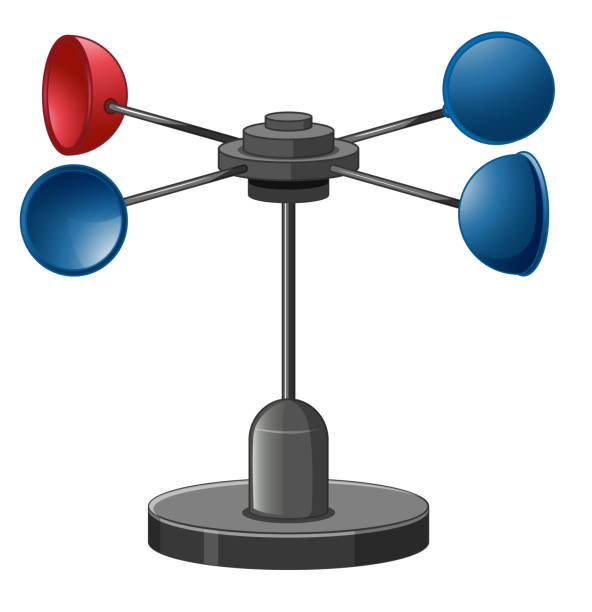Professional Tips for Adjusting Your Anemometer for Ideal Performance
Professional Tips for Adjusting Your Anemometer for Ideal Performance
Blog Article
Anemometers Unveiled: Understanding Their Relevance in Environmental Tracking and Safety Measures
The duty of anemometers in ecological monitoring and security steps is commonly underestimated, yet their significance is obvious. From meteorology to aviation security, anemometers play a crucial function in giving exact information that educates decision-making procedures and boosts overall security.
Background of Anemometers
The evolution of anemometers can be traced back to the old human beings where fundamental wind determining devices were very first made use of. One of the earliest known anemometers was the hemispherical cup anemometer created by Leon Battista Alberti in the 15th century.
Over the years, advancements in modern technology led to the advancement of more modern-day anemometers, including ultrasonic anemometers and laser Doppler anemometers, using increased precision and efficiency in determining wind rate and instructions. The history of anemometers showcases a remarkable trip of technology and development in the field of weather forecasting.
Kinds Of Anemometers
Throughout the area of meteorology, different kinds of anemometers have been established to accurately gauge wind rate and instructions. The most common type is the cup anemometer, which contains three or four cups mounted on horizontal arms that revolve with the wind. As the mugs rotate, the speed at which they revolve is directly symmetrical to the wind rate. An additional commonly utilized type is the vane anemometer, which includes a tail or fin that straightens itself with the wind instructions. This alignment enables the tool to identify the wind instructions. Sonic anemometers use ultrasonic signals to determine wind rate and instructions properly. They are typically used in research study applications as a result of their high precision. Hot-wire anemometers run based on the concept that the cooling impact of wind on a heated cable is proportional to the wind rate. These anemometers are appropriate for measuring low wind rates with high precision. Each kind of anemometer has its strengths and is chosen based upon the certain needs of the monitoring task available.
Applications in Meteorology
Having actually reviewed the numerous sorts of anemometers used in weather forecasting for gauging wind speed and direction, it is necessary to explore their sensible applications in the field. Anemometers play a crucial duty in meteorology by supplying precise and real-time data on wind conditions (anemometer). Meteorologists utilize anemometers to keep an eye on wind speed and instructions to anticipate weather condition patterns, concern cautions for severe weather condition events like tornados, hurricanes, and storms, and analyze atmospheric problems for air travel safety and security
In weather forecasting, anemometers assist in understanding regional and local wind patterns, which are important for forecasting Home Page weather changes and identifying weather trends. These tools are additionally made use of in research to research microclimates, urban warmth islands, and air contamination dispersion. In addition, anemometers are employed in agriculture to maximize crop management techniques, such as watering and chemical application, based upon wind problems.
Value in Aviation Safety
An integral element of making sure air travel safety hinges on the meticulous monitoring of wind conditions utilizing anemometers. Anemometers play a critical duty in aviation by offering real-time data on wind speed and direction, aiding pilots in making informed decisions during liftoff, flight, and landing. Uncertain and solid winds can dramatically influence airplane operations, making it necessary for aeronautics authorities to rely upon accurate wind dimensions to guarantee the safety and security of passengers and staff.

In the dynamic setting of air travel, where also small changes in wind rate and direction can have profound effects, anemometers stand as important devices for advertising risk-free and secure flight.
Duty in Environmental Research Study
Anemometers play an important role in ecological research study by providing necessary data on wind rate and direction. By properly determining wind features, anemometers aid researchers assess the movement of pollutants in the air, examine the effect of industrial emissions, and anticipate the spread of pollutants in the environment.


Final Thought
In conclusion, anemometers have played a crucial role in environmental tracking and safety and security actions. Comprehending the value of my explanation anemometers is necessary for properly measuring wind rate and instructions, which is important for anticipating climate patterns, guaranteeing safe aeronautics procedures, and performing environmental researches.
One of the earliest known anemometers was the hemispherical cup anemometer invented by Leon Battista Alberti in the 15th century. Over the years, improvements in modern technology led to the growth of even more modern-day anemometers, including ultrasonic anemometers and laser Doppler anemometers, providing enhanced accuracy and efficiency in gauging wind rate and instructions. Hot-wire anemometers run based on the concept that the cooling impact of wind on a warmed cable is symmetrical to the wind rate. Meteorologists use anemometers to check wind speed and instructions to forecast weather patterns, concern warnings for extreme weather events like storms, tornados, and tornadoes, and evaluate climatic problems for air travel safety.
Understanding the importance of anemometers is necessary for properly measuring wind speed and instructions, which is important for anticipating weather patterns, guaranteeing secure air travel procedures, and performing ecological research studies. (anemometer)
Report this page